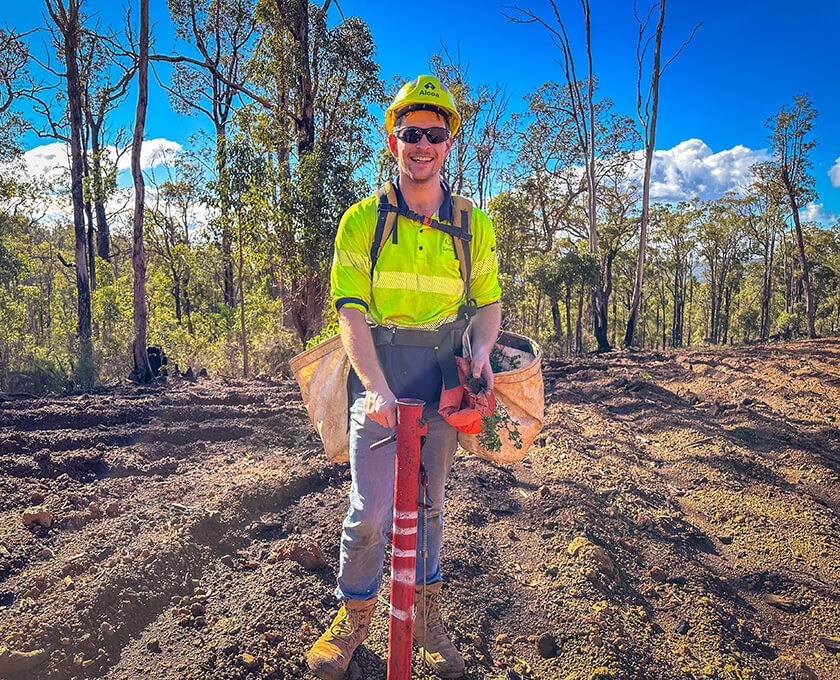November 03, 2025
Alcoa completes another big planting season

Alcoa recorded a big jump in the number of nursery-raised native seedlings put into the ground this year as part of its annual planting season, which wrapped up recently.
A total of 745,000 nursery-raised native seedlings were hand planted across 619 hectares at Alcoa Australia’s Huntly and Willowdale bauxite mines. In addition, 2.1 tonnes of zamia palm seeds were spread over the same areas.
The increase from about 500,000 plants and 1.6 tonnes of zamia seeds last year is part of a concerted effort to increase total areas under rehabilitation and ensure optimum density of planting.
Planting is one of the final steps of the initial rehabilitation process undertaken by Alcoa on areas where mining has ended. About 15 months before planting of the nursery-raised seedlings commences, areas are landscaped to blend into surrounding unmined landforms, seed-rich topsoil is spread, and collected and treated seed of around 40 different Northern Jarrah Forest native plant species is broadcast.
Nursery-raised seedlings constitute approximately 10 per cent of plant species used in rehabilitation work. The remaining species used for rehabilitation come from spreading fresh, seed-rich topsoil and broadcasting collected and treated seeds.
All returned plant species are native to the Northern Jarrah Forest and are based on the species found in nearby unmined forest reference areas. Additional species that may not be returned through initial rehabilitation works - including various types of orchids - can appear over time due to factors such as wind and animal dispersal of seeds from neighbouring unmined forest and areas of more mature rehabilitation.
Alcoa Plant Production Superintendent Greg Mullins said it was pleasing to see the year-on-year increase in planting.
“To see this growth in the numbers of native seedlings planted compared to last year is exceptional,” Mullins said. “With plans to continue increasing the total areas where we carry out rehabilitation work over the coming years, we expect to see continued growth in plant numbers.
“The processes we follow in our rehabilitation work are based on decades of scientific research and development. These nursery-raised plants are produced through a range of techniques including tissue culture to propagate species that produce little seed or don’t readily germinate through other plant-return methods used as part of this work.
“Over more than 50 years, we’ve refined techniques to enhance germination and survival rates in newly established rehabilitation, and the science and focus on continuous improvement is ongoing.”
With planting complete, Alcoa will move into a monitoring phase to ensure appropriate germination and survival rates, and to monitor the effects of external impacts such as excessive rain or prolonged dry periods.
In addition to the record planting this year, Alcoa increased areas where rehabilitation work commenced over the summer season to about 720 hectares, up from about 650ha the previous year.
The company aims to continue increasing new areas under rehabilitation to about 1000ha per year by 2027.